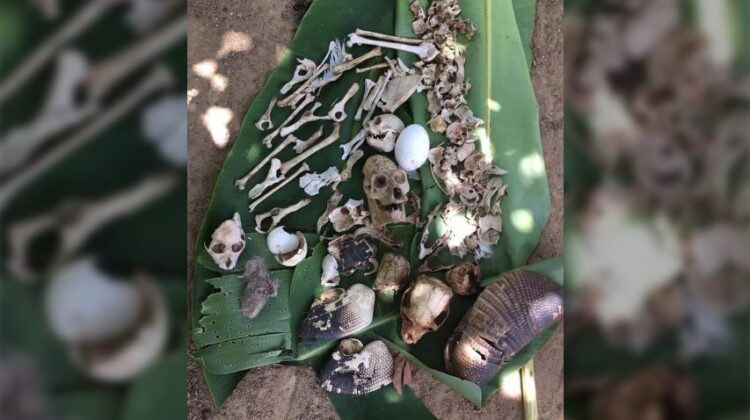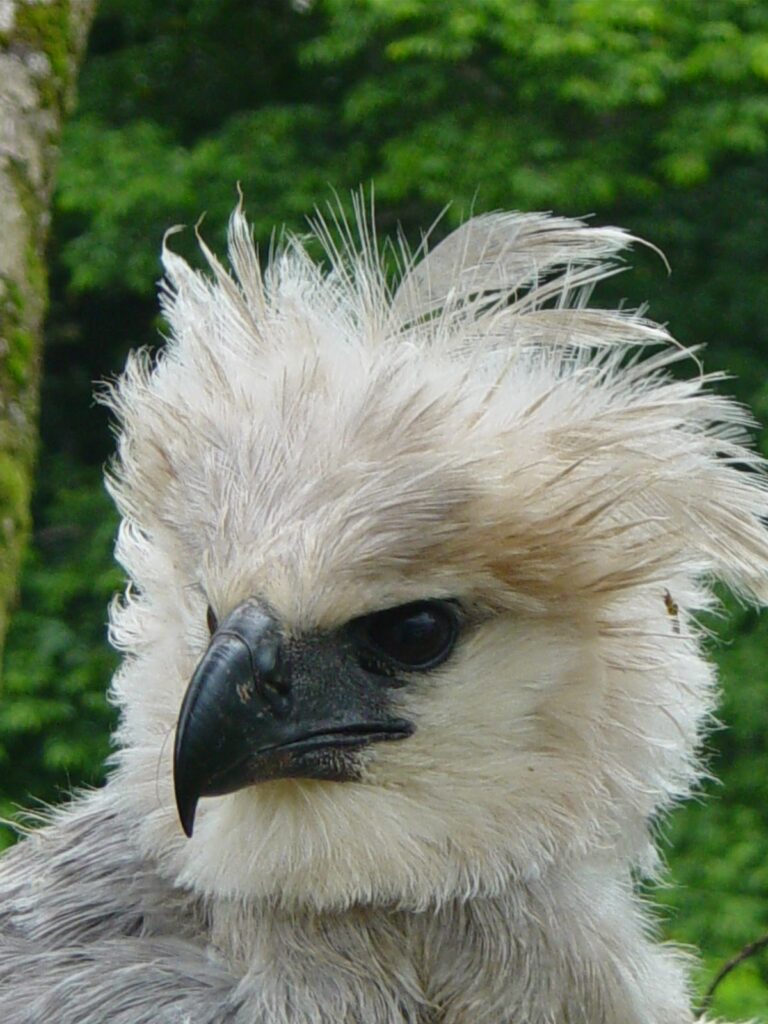
High in the Venezuelan canopy, a mysterious scene unfolded in the nest of a mated pair of harpy eagles. Researchers from the Harpy Eagle Conservation Program watched as the diligent parents tended to their precious egg, hunting and guarding it with utmost care. After their family feasts, a peculiar collection of remains would accumulate in the nest, resembling a morbid assortment of oddities. But then, an abrupt change occurred—the devoted eagle parents stopped visiting their nest altogether.

This puzzling behavior caught the attention of Dr. Alexander Blanco, a veterinarian at the Fundacion Esfera. Curiosity drove him to scale the towering tree and investigate the abandoned nest. What he found there was astonishing—a treasure trove of remnants left behind by the eagle family.
Among the remains, Dr. Blanco discovered beaks, nails, skins, feathers, hair, and armadillo shells. The nest was scattered with pellets, known as “Egagrópilas,” which consist of indigestible material like hair and bones regurgitated by the birds. And then, there were the bones—dozens of them—arms, legs, backbones, pelvises, and skulls. Some of the skulls appeared eerily human-like, evoking a sense of curiosity and intrigue.

However, the harpy eagle is not known to hunt humans, so the presence of human-like skulls was merely a coincidence. In reality, these powerful predators have an appetite for various monkeys that inhabit their Venezuelan habitat, as well as armadillos and other animals they can catch. Weighing around 11 pounds and armed with sharp beaks and talons, harpy eagles are formidable hunters, rarely leaving their prey a chance to escape.
Despite their dominance in the food chain, these eagles are not invincible. Larger predators, like ocelots and jaguars, may occasionally attempt an attack, but the harpy eagles’ strength and agility usually keep them safe. As the researchers closely examined the nest’s contents, they realized that harpy eagles have a carnivorous diet, incorporating bones into the structure of their nests due to their meat-heavy meals.

After a month and a half, the eagle parents surprisingly returned to their abandoned home. Dr. Blanco explained, “Indeed, the eagle realized that elements were missing.” Nevertheless, they decided to stay and resumed their routine of hunting, bringing food to the nest, and even laying another egg. This time, their efforts were rewarded with the successful hatching of a new harpy eagle chick.
The cycle of life continued in the treetops of Venezuela, and the harpy eagle parents reveled in the birth of their new offspring. The mysterious contents of the nest shed light on the diverse and carnivorous diet of these magnificent birds, revealing the wonders of the animal kingdom high above the forest floor. As the harpy eagles soar through their habitat, their nest remains a testament to the incredible world of nature and the marvels that await discovery.

Leave a Reply